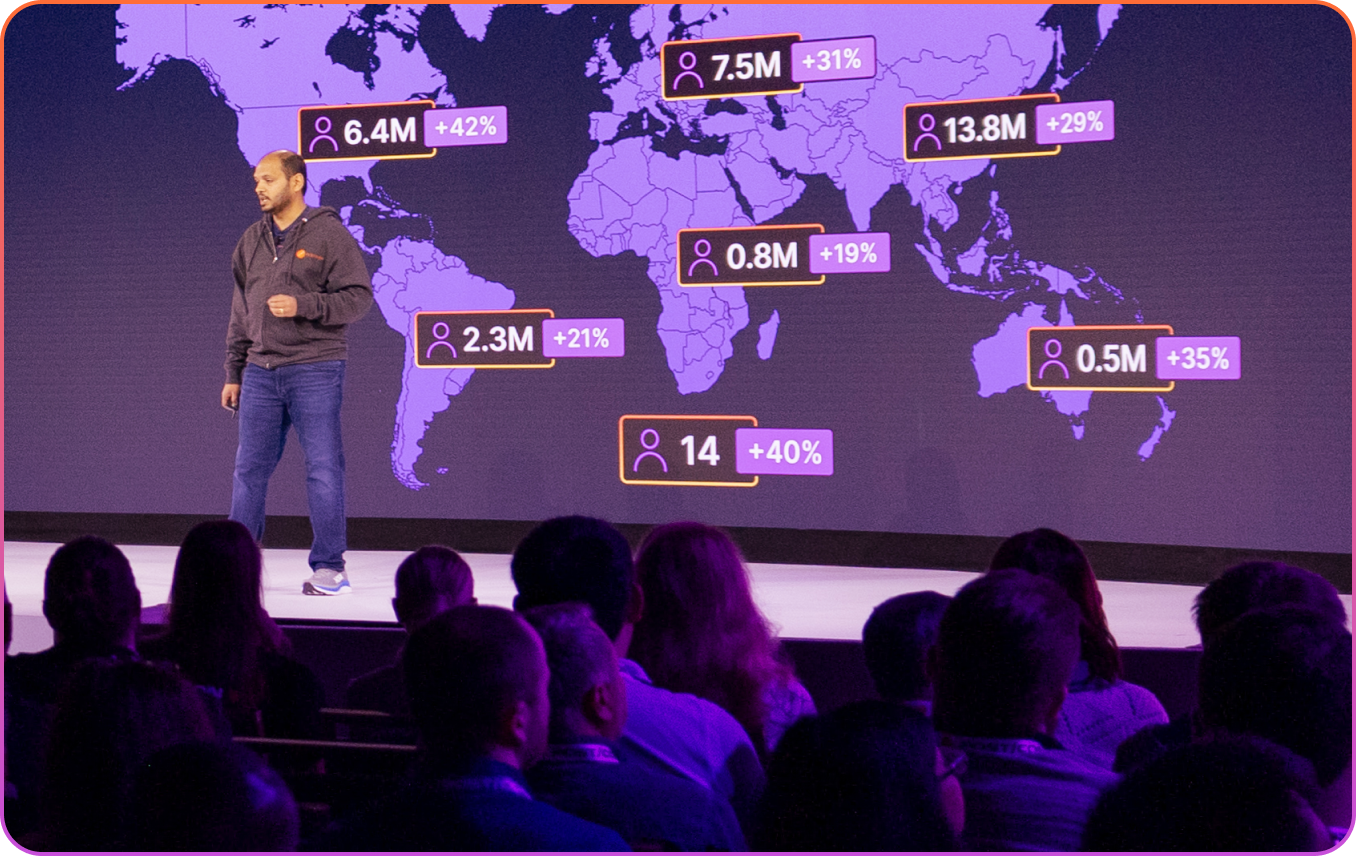2023 State of the API Report
This year, more respondents embraced a thorough API-first approach to development: 11% ranked themselves as highly API-first. That's up from 8% in each of the prior two years.
We call this group “API-first leaders.” They rate themselves a 9 or 10 on a 10-point scale.
What characterizes an API-first approach? It prioritizes APIs at the beginning of the development process, positioning APIs as the building blocks of software. This involves developing APIs before writing other code, instead of treating them as afterthoughts.
What are the benefits of being an API-first leader? As discussed elsewhere in this report, this elite group produces APIs faster and encounters fewer failures than average. And when an API does fail, these leaders can restore it faster—usually in under an hour.
While 11% of all respondents were API-first leaders, their representation rose with company size. At companies with 1,000 developers or more, 15% of respondents rated themselves API-first leaders. Among industries, financial services had the highest API-first representation, also at 15%.
Due to rounding, percentages may not add up to 100%.
We asked about the benefits of an API-first approach to development. Over 75% of respondents somewhat agreed or strongly agreed that developers at API-first companies are more productive, create better software, and integrate faster with partners.
When we drilled down into the results, we found that the benefits of API-first become more apparent as a company adds developers.
At small companies with 100 developers or fewer, 32% of respondents strongly agreed that API-first companies onboard faster. But as developer headcount rose above 100, that figure steadily climbed.
By the time a company reached 5,000 developers, 42% of its respondents strongly agreed with the statement. We see similar increases across almost all metrics when answers are sorted by company size.
Multiple choices allowed.
We asked respondents to identify the priorities for their development teams and organizations. The number one choice this year remained the quality of applications, programs, or services developed, cited by 79% of survey-takers. Reliability, agility, and security were the next most important priorities.
“Reducing costs” remained low on the list, but 35% of survey-takers indicated that it was important this year, compared with 31% last year.
This focus on costs is reflected elsewhere in the survey. For instance, pricing is a stronger consideration this year when developers evaluate whether to integrate with an API.
Multiple choices allowed.
We asked how people measure the success of their public APIs, and the top answer was API usage. After that, the answer depended on the respondents' job role and industry.
For executives, directors, and managers, the second-best indicator of public API success was revenue. For engineers and developers, it was the number of active API users.
The number of active API users was also chosen as the second-best measure of success across industries, with three exceptions: financial services, retail, and advertising. There, API revenue was considered the second-most important metric.
Due to rounding, percentages may not add up to 100%.
When asked to categorize the architectural style of APIs in their organization's portfolio, respondents said microservices were the dominant share at 42%.
After that, monoliths and “mesoservices”—right-sized API services—each represented a little over 20% of organizations' services.
Additionally, survey-takers said more than 10% of APIs at their organization powered microservices that had grown large and unwieldy, which we have termed macroservices.
Due to rounding, percentages may not add up to 100%
What factors do people evaluate before integrating with an API? Respondents said performance and security were the top two factors, as they were last year.
But one factor saw a jump in importance this year: pricing. It was cited as a consideration by 47% of respondents. That's up from 41% in each of the past two years.
This focus on price may reflect a more cost-conscious API consumer in the wake of tech's economic contraction. Executives were particularly likely to say pricing is important, with 60% citing it as a factor to consider before integrating with an API.
Multiple choices allowed.
What factors go into an organization's decision to consume an API? For a second year, the most popular answer was how well the API integrates with internal apps and systems. It was chosen by 67% of respondents.
In manufacturing, internal integration was cited more often than in any other sector: 73% of respondents there called it important.
Multiple choices allowed.
What factors do organizations consider when evaluating whether to produce an API? Integration with internal apps and systems was by far the top choice, for a second year.
That makes internal integration the top consideration when both producing and consuming an API. This priority has implications for API design and documentation, as well as the full development lifecycle.
For almost all industries, the second-most important consideration when producing an API was integrating with external apps and systems. The exception was the gaming, entertainment, and media sector. There, the second-most important consideration was the ability to add functionality to internal apps and systems.
Multiple choices allowed.
Over 200,000 U.S. tech jobs have been lost since the start of 2023, and the largest share of those has been in software developer roles. Many teams are expected to do more with less. We wanted to know: can APIs help achieve this goal?
Respondents told us yes. Almost three-fourths said APIs allow them to leverage existing code rather than build an app from scratch. More than half cited APIs' automation abilities, including scheduling and triggering specific events and setting tasks and workflows into motion.
The more developers a company had, the likelier respondents were to acknowledge APIs' ability to help developers do more with less.
Multiple choices allowed.
